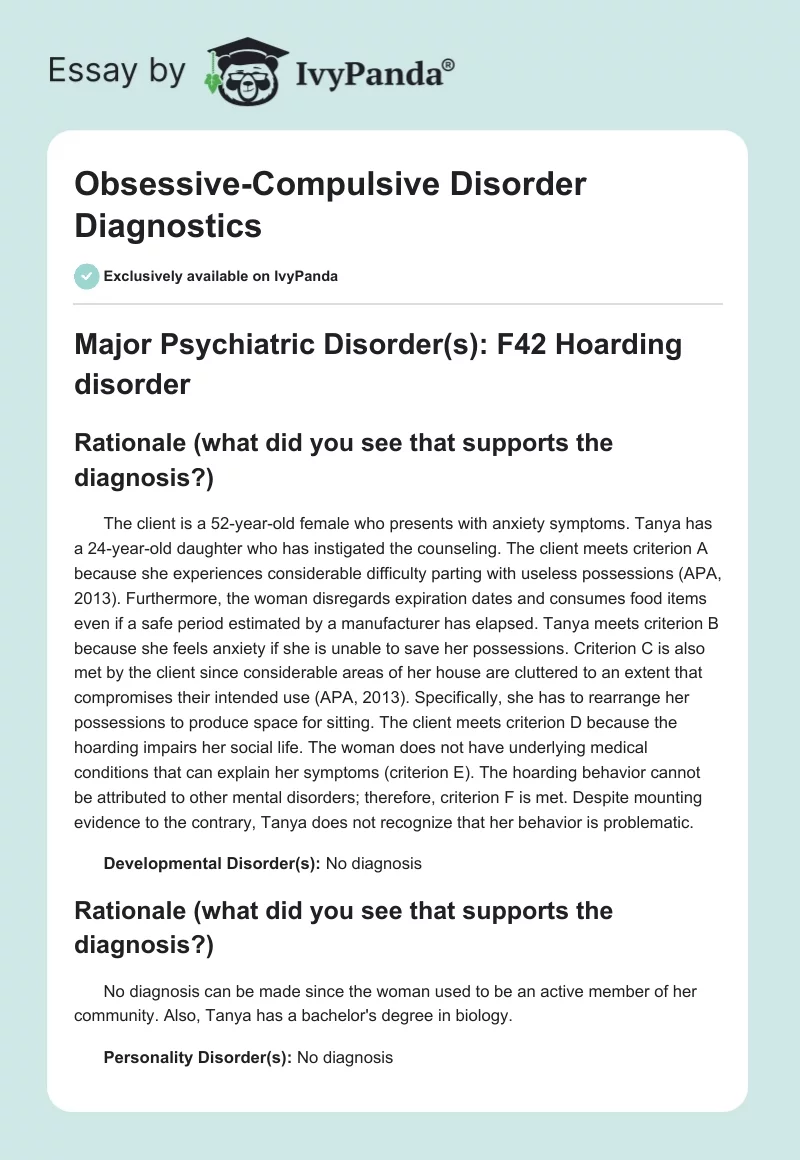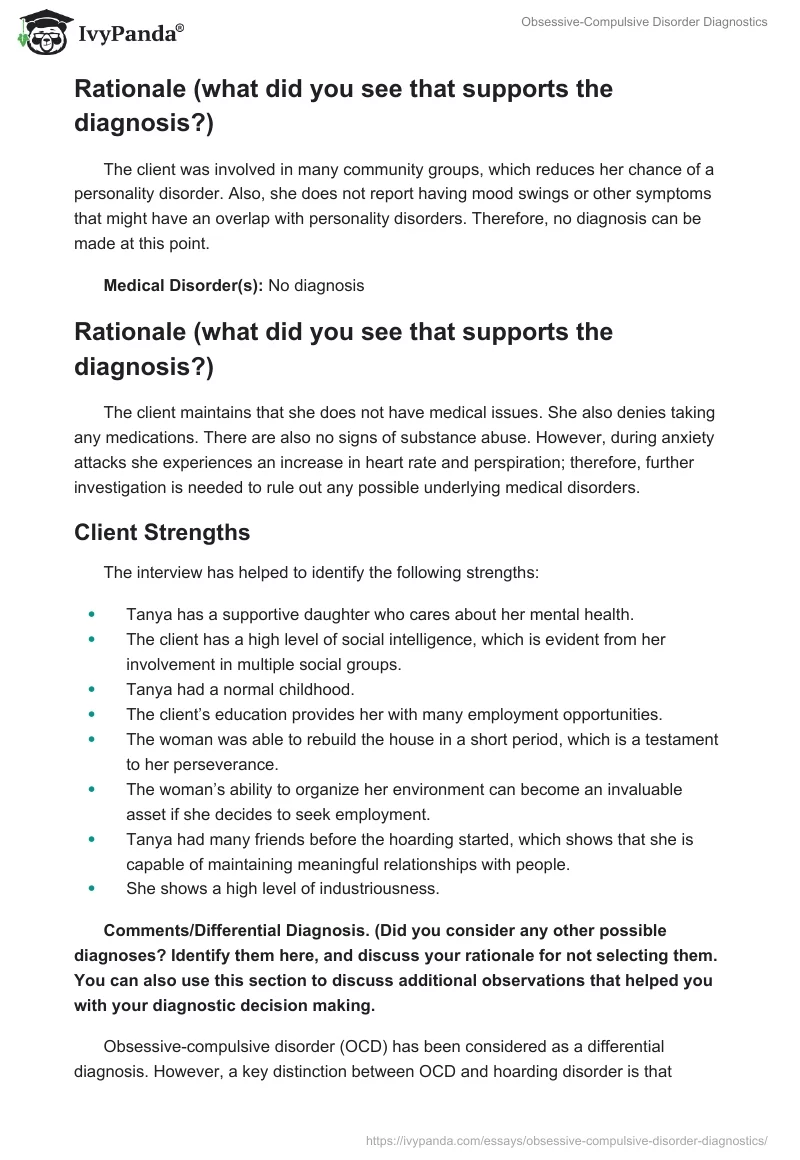Major Psychiatric Disorder(s): F42 Hoarding disorder
Rationale (what did you see that supports the diagnosis?)
The client is a 52-year-old female who presents with anxiety symptoms. Tanya has a 24-year-old daughter who has instigated the counseling. The client meets criterion A because she experiences considerable difficulty parting with useless possessions (APA, 2013). Furthermore, the woman disregards expiration dates and consumes food items even if a safe period estimated by a manufacturer has elapsed. Tanya meets criterion B because she feels anxiety if she is unable to save her possessions. Criterion C is also met by the client since considerable areas of her house are cluttered to an extent that compromises their intended use (APA, 2013). Specifically, she has to rearrange her possessions to produce space for sitting. The client meets criterion D because the hoarding impairs her social life. The woman does not have underlying medical conditions that can explain her symptoms (criterion E). The hoarding behavior cannot be attributed to other mental disorders; therefore, criterion F is met. Despite mounting evidence to the contrary, Tanya does not recognize that her behavior is problematic.
Developmental Disorder(s): No diagnosis
Rationale (what did you see that supports the diagnosis?)
No diagnosis can be made since the woman used to be an active member of her community. Also, Tanya has a bachelor’s degree in biology.
Personality Disorder(s): No diagnosis
Rationale (what did you see that supports the diagnosis?)
The client was involved in many community groups, which reduces her chance of a personality disorder. Also, she does not report having mood swings or other symptoms that might have an overlap with personality disorders. Therefore, no diagnosis can be made at this point.
Medical Disorder(s): No diagnosis
Rationale (what did you see that supports the diagnosis?)
The client maintains that she does not have medical issues. She also denies taking any medications. There are also no signs of substance abuse. However, during anxiety attacks she experiences an increase in heart rate and perspiration; therefore, further investigation is needed to rule out any possible underlying medical disorders.
Client Strengths
The interview has helped to identify the following strengths:
- Tanya has a supportive daughter who cares about her mental health.
- The client has a high level of social intelligence, which is evident from her involvement in multiple social groups.
- Tanya had a normal childhood.
- The client’s education provides her with many employment opportunities.
- The woman was able to rebuild the house in a short period, which is a testament to her perseverance.
- The woman’s ability to organize her environment can become an invaluable asset if she decides to seek employment.
- Tanya had many friends before the hoarding started, which shows that she is capable of maintaining meaningful relationships with people.
- She shows a high level of industriousness.
Comments/Differential Diagnosis. (Did you consider any other possible diagnoses? Identify them here, and discuss your rationale for not selecting them. You can also use this section to discuss additional observations that helped you with your diagnostic decision making.
Obsessive-compulsive disorder (OCD) has been considered as a differential diagnosis. However, a key distinction between OCD and hoarding disorder is that “thoughts associated with hoarding do not resemble obsessions in that they are not experienced as intrusive or unwanted” (Frost, Steketee, & Tolin, 2012, p. 221). There is no regularity in Tanya’s behavior. Moreover, the client does not regard her urge to hoard useless things as problematic. Another important distinction between the two conditions that have allowed rejecting the diagnosis is a lack of anxiety accompanying the obsession (Frost et al., 2012). Unlike clients with OCD, the woman only feels anxiety at the thought of eliminating the clutter. There is ample evidence pointing to the fact that the hoarding is preceded by a stressful event (Frost et al., 2012). Tanya lost a house and a husband, which could have triggered the disorder.
References
APA. (2013). Diagnostic and statistical manual of mental disorders (5th ed.). Washington, DC: American Psychiatric Publishing.
Frost, R., Steketee, G., & Tolin, D. (2012). Diagnosis and assessment of hoarding disorder. Annual Review of Clinical Psychology, 8(1), 219-242.


 3.67
3.67
